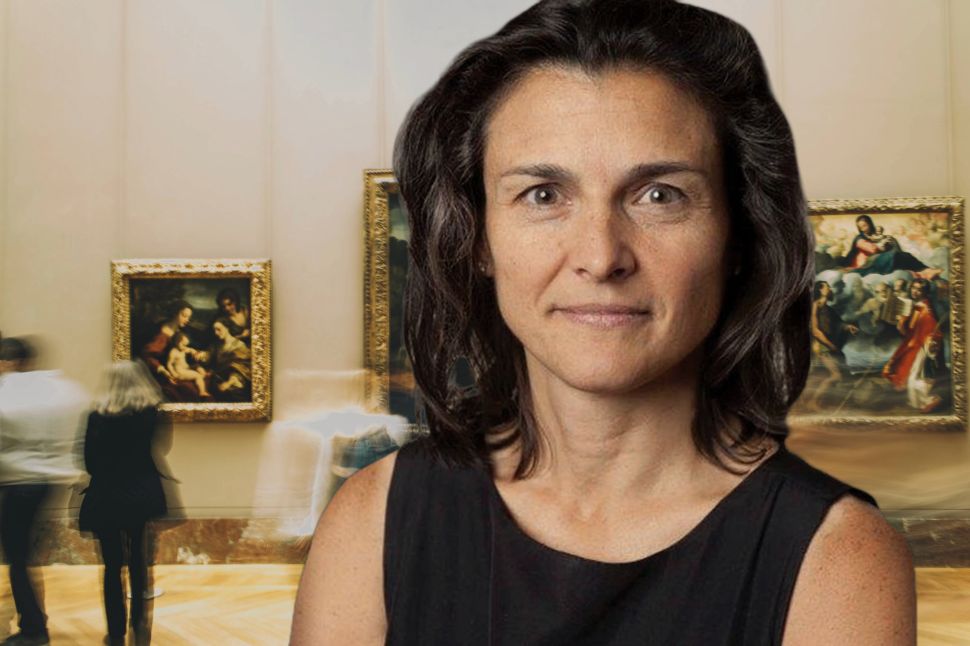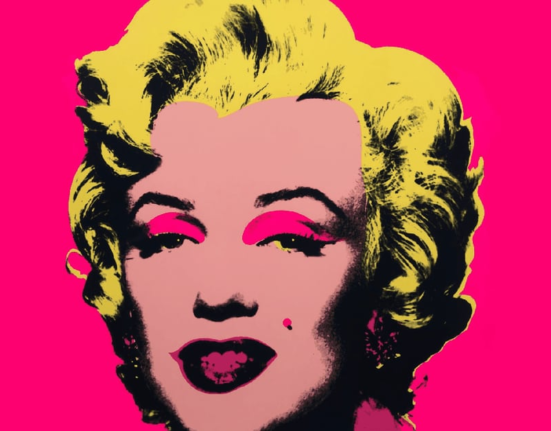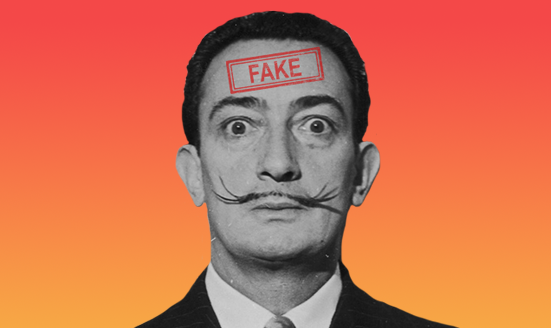
Art can be a confusing property to own. Do you buy a work of art for what it is or the potential to appreciate in value? If a wealthy family owns a sizable collection of artworks passed down from generation to generation, does it matter how much it’s worth even if they are never going to sell it? There are no clear answers to any of those questions but art collectors are increasingly asking them.
That’s where Morgan Stanley (MS)’s Art Resources Team (ART), a unit under the investment bank’s Private Wealth Management division, comes in. “Art represents a growing component of many investors’ balance sheets but is often overlooked in the context of wealth management,” says its website. The ART team is headed by Sarah McDaniel, a seasoned investment manager with more than 20 years of experience holding various roles at Morgan Stanley.
“I’m a curious person and I love learning,” McDaniel told Observer. “I love working with clients and figuring out how to take complex issues, distill them down, and come up with solutions.”
McDaniel has a degree in Art History from Dartmouth College, but never thought she would have a career in art and was fine keeping it as a hobby. After college, McDaniel began her career at Christie’s Auction House and later moved into wealth management. In an interview earlier this month, McDaniel discussed how her team at Morgan Stanley helps clients apply investing disciplines from traditional asset classes to art, the unique role of art in wealth management, and the constant debate over art being a passion asset vs. a financial asset.
The following interview has been edited for length and clarity.
Observer: Tell me about Morgan Stanley’s Art Resources Team (ART). Who does it serve and what does it do, exactly?
Sarah McDaniel: The ART team helps clients understand the role of art on their balance sheet. For example, how valuable and liquid is a client’s art collection? How concentrated is it on one artist or genre? We take the disciplines from other solutions and services at Morgan Stanley and try to translate them into art and bring context to an art portfolio. We work with multi-generational family offices and also those new to the art world, such as entrepreneurs and corporate executives who are starting to form their taste in art.
Do you advise clients on buying and selling art?
Not directly. The ART team provides a third-party platform of art advisors who advise clients on buying and selling decisions. We work in conjunction with them and define what portion of a client’s balance sheet is suitable to include art and collectibles. Collectibles include furniture, jewelry and wine.
Can you give me a sense of how big the private art market is and how significant art is in a typical client’s investment portfolio?
Studies have shown that anywhere between 10 and 15 percent of an ultra-high-net-worth balance sheet is art and collectibles. In aggregate, the global total value of art in private collections is between $2 to $3 trillion. And it’s estimated there are $60 billion worth of art transactions happening a year.
With the turnover in the billions of dollars and the total asset base being significantly larger, you can imagine art is a very illiquid asset. It’s also a negative cash-flow asset because there are insurance, storage costs, restoration costs, etc. So it’s really important for us to have contextual conversations with clients about liquidity, holding costs, governance, philanthropy—all those topics.
Many investors own art in the hope of it being a positive capital appreciation asset, but a lot of times it’s a capital loss. Our goal is to make art an asset, not a liability.
When exactly did art become an asset class?
Since the early 2000s, there have been art funds managed by private equity firms. Some have been more successful than others. Some are still in the market. So it has been at least that long since people considered art as an asset. More recently, I think the rise of buying and selling online is an indication of more people seeing art as an investment.
You mentioned you work with both multi-generational collectors and newbies to the art world. I suppose they have different tastes and investing habits when it comes to art. Is it true?
Some people think of art as a passion asset, and some think of it as a financial asset. When we talk to people with inherited wealth, generally they think of art as a passion asset, because they collected it and lived with it for multiple generations. But in the event of generational wealth transfer, it’s necessary to think of art as a financial asset from the perspectives of governance and philanthropy. For example, when an art collection is passed down, should the inheritor sell it, donate it, or do something else with it?
Those new to the art market—people who may come from tech, real estate and finance—tend to bring their business acumen to the art world. So they are more inclined to look at art as a financial asset. For example, real estate is a bit like art in that each asset is unique and valuation can be challenging. Sometimes there aren’t any comparables; they are highly illiquid; buying and selling aren’t as frequent as other asset classes; and transactional costs are considerable.
That’s an interesting analogy. Does art investing follow the same principles as real estate investing?
A house might be a big, lumpy purchase. But with art, you might not want to do that right away. Within private wealth management, we work with clients with a total net worth of approximately $25 million or higher. Within ultra-high-net-worth clients—it’s usually not one individual, but a family—total net worth can go up significantly.
Generally, lower net worth clients may not buy one oil painting because of concentration risk with one artist or one genre. Advisors might recommend photographs and prints that tend to be less pricey because they are multiples and can potentially be sold more easily. Over time, as their net worth increases, so does their purchasing power of art. And they might trade up in quality and medium.
Is there such a thing as buying a portion of one piece of artwork?
Yes. Actually, on the higher end of the market, we are starting to see fractionalization. In some cases, a work of art is fractionalized into equal shares. I’ve also seen people buying specific, unique portions of one piece of art.
Is fractionalization a good investment strategy?
It’s making art more accessible on the high end of the market. But one challenge with art fractionalization is diversification. It’s slow to get to a well-diversified portfolio. I think what’s really important is reaching a critical mass of lots of different artists and lots of pieces so that buyers not only get access but also the ability to diversify.
Generally speaking, what determines the value of an artwork?
There’s the artist itself, the medium (for example, drawing, watercolor and print tend to be less dear than sculpture or oil painting), the quality of the piece and its condition, and the significance of that work of art in its time period.
In addition, having the provenance to track from the artist to whoever owns it now is incredibly important. And then, there’s the economics of taste, which affects demand. There are taste variations within collecting categories in the U.S. and across the globe. These are all factors affecting the valuation of a work of art.
What about macroeconomic factors, like interest rates or economic cycles? Do they affect the value of art?
The long-term cycles of the financial market ebb and flow. So does the art market. The art market tends to lag behind the other parts of the economy because of the infrequency of trading.
We find through data that what happens within the art market—especially the higher end of the market—is that when the financial market is ebbing, there tends to be less art on and up for sale. Some of the ebbs and flows of the art market are purely supply-based: If you don’t have to sell a piece of art, why would you want to sell it in a bad market?
It feels like art is somewhat like luxury goods in the sense that it has the potential to appreciate in value, but, even if it doesn’t, you can still enjoy it. We’ve seen in Covid and previous economic cycles that the luxury sector tends to fair better during economic downturns. Does it apply to the art market? Is art as a recession-proof investment?
I don’t think anything is totally recession-proof. At some point, there will be a repricing of all financial assets. In my opinion, the real challenge to the art market is not the financial market, but the great generational wealth transfer.
There are tens of trillions of dollars transferring from one generation to another. People are living longer, and technology is providing an opportunity for people to transact more. For example, someone’s grandparents have passed away and their art collection is in the hands of the second or third generation. By that time, there might be a disconnect in the economics of taste. That means short-term trends and taste changes might happen faster, so we might see highs and lows more often.
What do you think is the #1 misconception about investing in art as an asset?
I want to stress it’s much easier to buy art than to sell it. When you buy a work of art, the important thing is not the purchase, but to consider whether there’s a secondary market that can provide liquidity to get in and out.
For someone who’s interested in investing in art, do you have tips on how to get started and learn about the market?
I would suggest going to auction houses. Many are open to the public. Look at the art that’s being bought and sold. Auction houses have two big sales events a year. The volume of properties going through those events is almost like having an art history degree. It’s incredibly exciting.
Talk to specialists who are knowledgeable about galleries and art fairs. Ask questions. They love talking about art. You’ll learn about the art itself, how it got to that location, and all the nuances of the story.
You have a college degree in art history. Do you have a favorite artist or art genre?
Taste changes over time. When I was studying art history, I liked Impressionism and Modernism. I still do. But what I find after working in the art world is that the art market is very different from art history. It’s about theory and practice, and strategy and implementation. Learning what’s actually bought and sold in the market, I became more interested in the contemporaries and different media.
For me, it’s not only the aesthetic part of the art, but the story of the artist and how they convey their views and beliefs through their art. I am a visual thinker. That’s how art resonates with me. So, my taste has evolved, not necessarily from one genre to another, but by building out and appreciating as much of the art market as possible.






